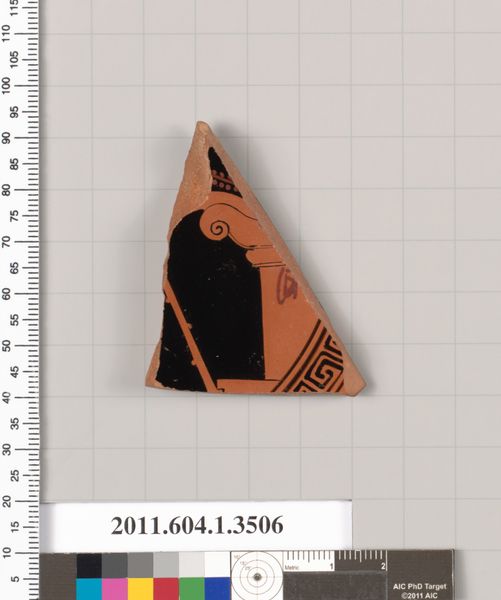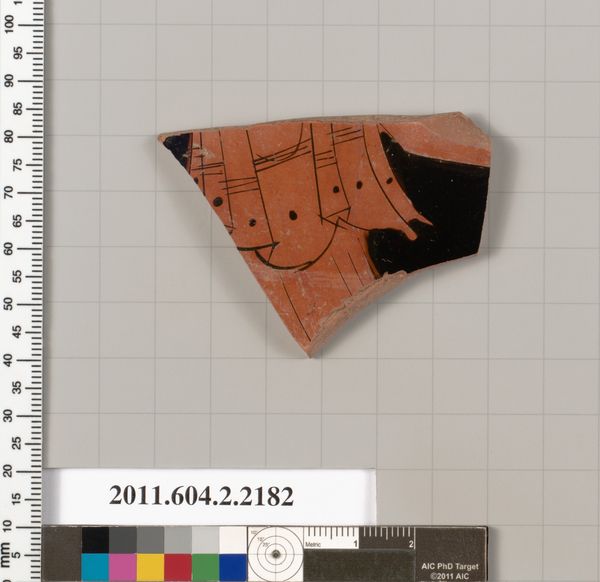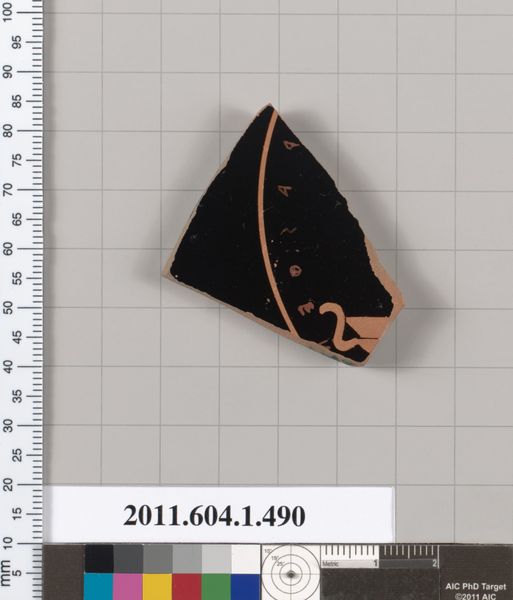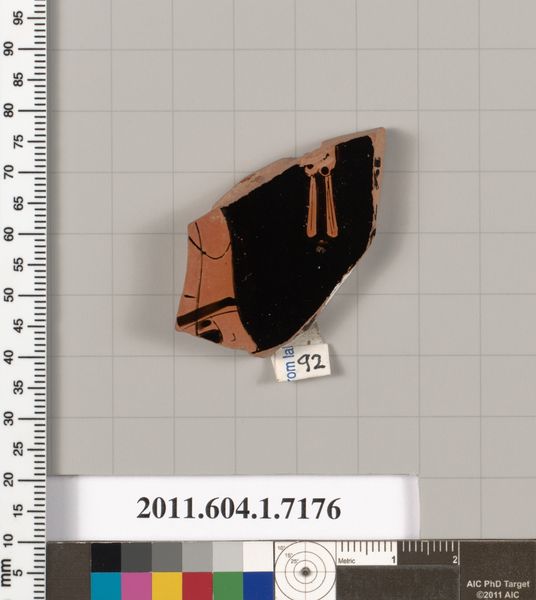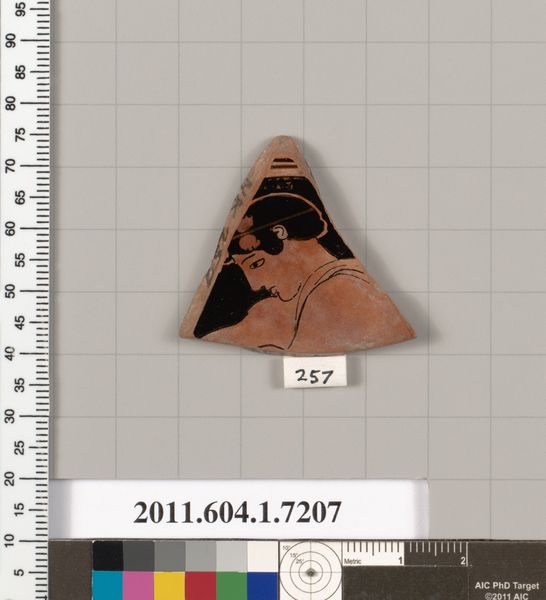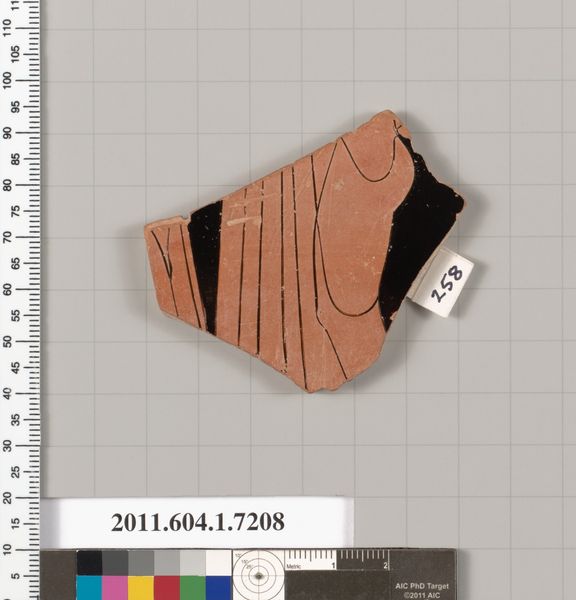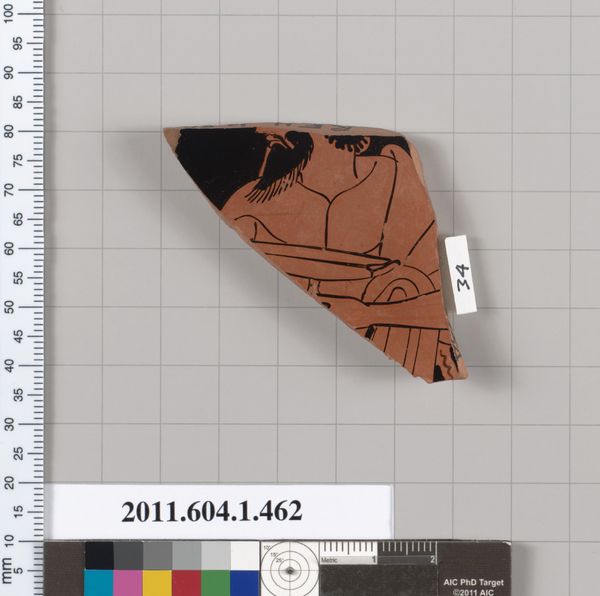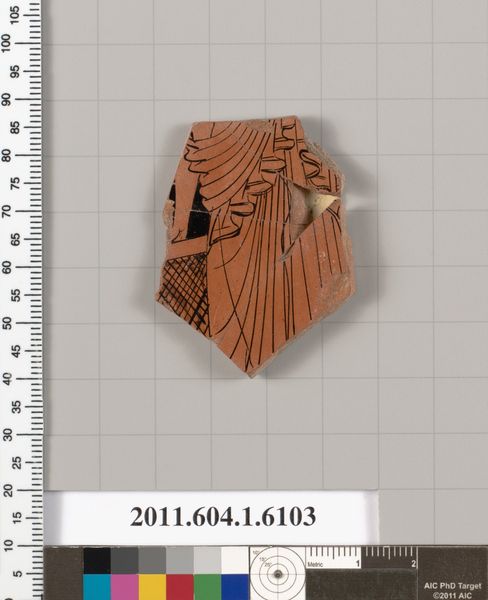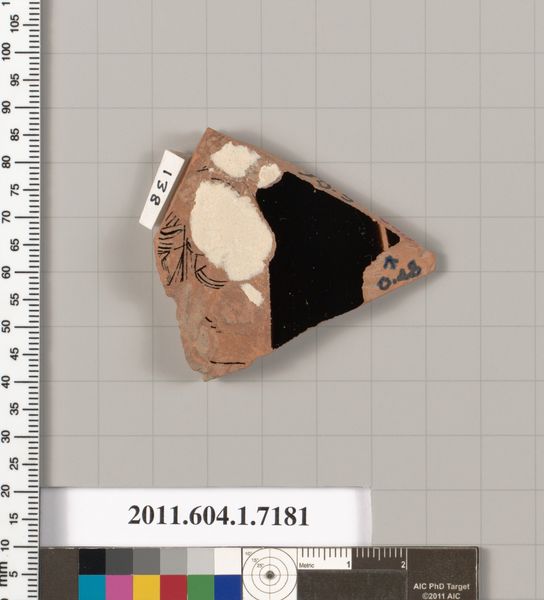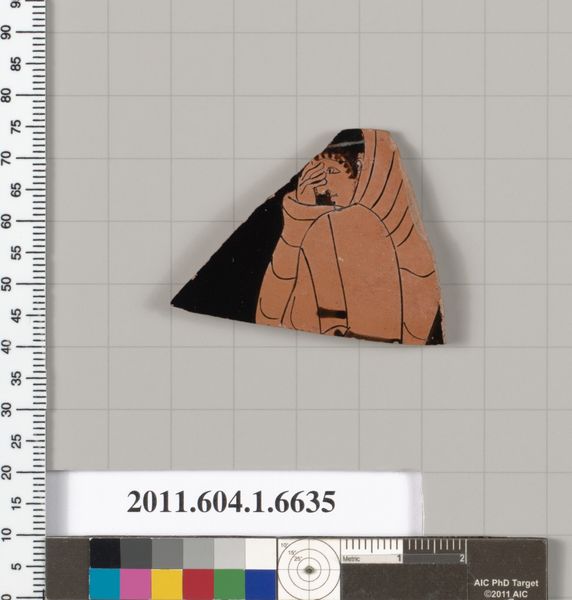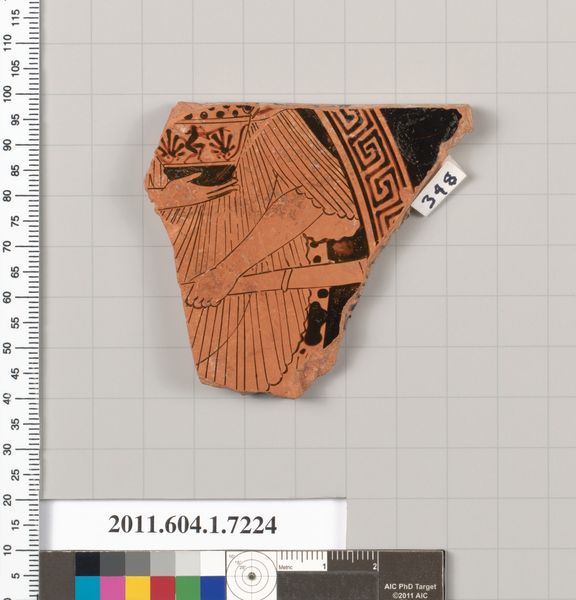
drawing, ceramic, terracotta
#
drawing
#
greek-and-roman-art
#
ceramic
#
vase
#
figuration
#
ancient-mediterranean
#
terracotta
Copyright: Public Domain
Curator: Before us is a fragment of a terracotta kylix, a drinking cup, dating back to around 500 BC. It resides here at the Metropolitan Museum of Art. Editor: It's so small! The fragment itself has a powerful, almost aggressive starkness because of the black glaze against the warm clay. What remains creates a real tension on the surface. Curator: The process of creating these cups involved intricate labor. The potter shaped the clay, then an artist meticulously painted the figures using a slip made from refined clay. This piece gives us insight into the assembly-line nature of workshops, challenging notions of the singular artistic genius. Editor: Yet within those constraints, consider how elegantly those few lines define the figures! The negative space articulates movement. The curve of the lip suggests an almost complete form of narrative. The broken nature even highlights a visual tension, suggesting some violence done in history! Curator: Exactly, such vessels were functional, mass-produced objects meant for symposia, gatherings where political discourse and social bonding took place. To see how it functioned in society—how frequently it was used or who would handle this item–that gives its fragmented nature importance in the world. Editor: Though that context gives understanding, to limit the focus solely to function diminishes it. The careful artistry elevates the terracotta into more than a vessel. Curator: True, but thinking about consumption also encourages to rethink the values and traditions that led people to craft and acquire pieces like this one. Editor: It's a potent combination of function and design that allows viewers like us to question this object's position both practically, visually and politically today. Curator: Examining this kylix shatters conventional thoughts about classical art as objects of inherent, rarefied beauty divorced from a wider network of societal elements. Editor: I can only add it makes us aware that beauty may exist simply within composition, without having to look further at societal pressures to grant it the role of artistic importance.
Comments
No comments
Be the first to comment and join the conversation on the ultimate creative platform.
